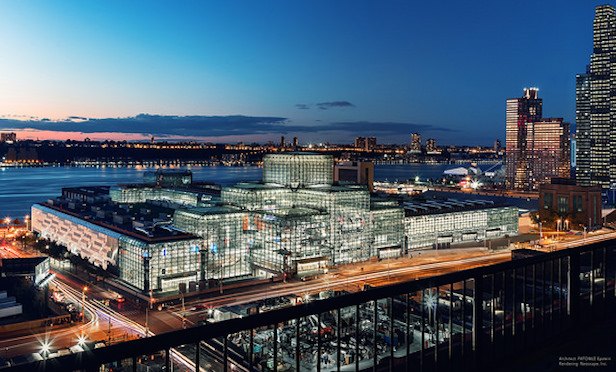 Economic development spending in New York State is expected to increase significantly due in part to increased spending on the Javits Center expansion, the state's ongoing broadband initiative and economic development projects on Long Island.
Economic development spending in New York State is expected to increase significantly due in part to increased spending on the Javits Center expansion, the state's ongoing broadband initiative and economic development projects on Long Island.
NEW YORK CITY—Economic development spending in New York State has grown substantially over the past three years and is projected to grow even further in the years to come, according to a report released today by the Citizens Budget Commission.
The report, a follow-up to a Citizens Budget Commission report released in September 2016, is critical of what it terms as a lack of transparency and accountability by state and local economic development agencies as to the benefits of tax breaks and other incentives. The commission's report states that accountability and transparency has not meaningfully improved since its 2016 report was issued.
Riley Edwards, research associate for the CBC and the author of the latest report entitled “10 Billion Reasons to Rethink Economic Development in New York,” stated, “This brief found that between 2016 and 2018 state and local economic development costs continued to increase, state spending shifted toward discretionary grants and away from as-of-right tax breaks, and transparency has not meaningfully improved.”
Edwards notes that Gov. Cuomo has proposed as part of his executive budget this legislative session to fund the creation of a database of economic development deals as well as procurement reform. However, he said those proposals need to be codified in statute and passed by the State Legislature in this session in order to have the strength of law.
He adds in the report that further reforms are needed, specifically: “a unified economic development budget that includes information on the cost of all economic development programs for the coming fiscal year; standardization of metrics across all programs to allow for comparability of results; and program design improvements so that the benefits follow private sector investment, eligibility is standardized and results are evaluated regularly.”
Some of the key data points from the report included that of the $5.6 billion in local economic development costs in 2018, a total of approximately $3.2 billion was earmarked for projects in New York City.
The commission states that the state's Fiscal Year 2020 Executive Budget Financial Plan predicts that the state will continue to increase economic development funding, including a projected 52% increase in Empire State Development spending and a 106% rise in other state capital spending, due in large part to increased spending on the Javits Center expansion, the state's ongoing broadband initiative and economic development projects on Long Island.
Empire State Development funding has grown 63% from 2016 ($739 million) to $1.2 billion in 2018. Edwards notes in his report that during that three-year period, the ESD has made some large appropriations for new projects, including the construction of Moynihan Station ($700 million) in New York City, a second phase of investment for the Buffalo Billion project ($400 million) as well as the $1.1 billion Life Sciences initiative.
New York spent $9.9 billion on state and local economic development efforts in 2018, up $1.4 billion and 17% from $8.5 billion in 2016.
State economic development costs were $4.4 billion in 2018, an increase of $965 million over the 2016 total. State tax expenditures grew $322 million to $2.5 billion, while discretionary state spending grew $644 million to $1.8 billion.
Local costs, including tax expenditures and other spending, totaled $5.6 billion and 56% of the total 2018 cost. Local tax expenditures increased $458 million to $3.7 billion and local spending stayed flat at $1.9 billion.
Several at one time highly touted economic development programs have in fact shrunk in recent years, according to the report. The state's Start-Up New York program, which allows for 10 years of tax-free operation for new and expanding businesses that located in designated areas on or near college campuses, had a projected value of $105 million in 2016. In 2018, the program's value was estimated at approximately $7 million.
New York Power Authority's ReCharge NY incentives have fallen mainly due to the lower costs of market rate power that have decreased the benefits of the program.
© Touchpoint Markets, All Rights Reserved. Request academic re-use from www.copyright.com. All other uses, submit a request to [email protected]. For more inforrmation visit Asset & Logo Licensing.







